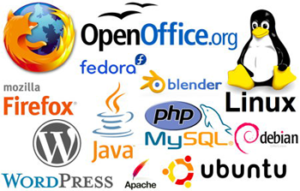 I do not think that I can sufficiently express the deep admiration and appreciation that I have for the open source community. It is undoubtedly my favorite thing about the tech industry. Without it, I would not have been able to complete certain hobby projects over the past few years, and this site would be completely different, or it may not exist at all. So, what is open source? Well if you were to look it up with a quick Google search, then you would probably get a definition that refers to software. That definition may be something similar to the one shown below, from Wikipedia.
I do not think that I can sufficiently express the deep admiration and appreciation that I have for the open source community. It is undoubtedly my favorite thing about the tech industry. Without it, I would not have been able to complete certain hobby projects over the past few years, and this site would be completely different, or it may not exist at all. So, what is open source? Well if you were to look it up with a quick Google search, then you would probably get a definition that refers to software. That definition may be something similar to the one shown below, from Wikipedia.
“Open-source software (OSS) is a type of computer software in which source code is released under a license in which the copyright holder grants users the rights to use, study, change, and distribute the software to anyone and for any purpose. Open-source software may be developed in a collaborative public manner. Open-source software is a prominent example of open collaboration”.
Wikipedia does have another page that describes open source, but I do like the explanation shown above regarding software because it mentions “open collaboration”. Now although the definition above specifically mentions software, the open source community extends to other areas as well, such as hardware. If you happened to watch the video in the previous post about microcontrollers, you may have learned about the Arduino. That is an example of open source hardware. Anyone can go out and buy an Arduino microcontroller and look up a few projects to get started. Most people do that and there is nothing wrong with that. I did that. Well, if for some reason or another buying the Arduino microcontroller is not an option for you, then Arduino’s open source community also provides hardware schematics on-line so that anyone can build their own version of the Arduino microcontroller. The real power of the open source community is that there is true collaboration. Anyone in the world, including you, can work on, create, or collaborate on open source projects. Considering that one of the major themes of this website is to provide accessible resources to anyone seeking STEM education and career opportunities, I would be remiss if I did not share some of the benefits of the open source community with the readers of this blog. I unapologetically love the idea of free education and open collaboration.
Operating Systems
This post can go into many different directions in regards to open source hardware and/or software, but I’d like to talk about something that everyone is familiar with. I would like to talk about operating systems. Later on, I may dedicate a full post to operating systems, but for now I’m going to try my best to stay on the topic of open source while highlighting operating systems. Chances are you are accessing this site via an operating system such as Android, Windows, iOS, OSX, or Linux. Listed below is a chart showing their current popularity and usage.
Source: StatCounter Global Stats – OS Market Share
The operating systems that are mentioned above are among the most popular. Of those operating systems, Android, OSX, and Linux are open source. OSX by Apple, runs on an open source platform but it does include some closed source features from macOS. Android by Google is also a very recognizable operating system given the enormous popularity of cell phones. The fact that these operating systems are open source allows anyone to create or modify apps on their platforms. Microsoft and Apple are obviously two well know titans in the tech industry. Both are billion dollar companies with proprietary technology and teams of developers and coders constantly innovating and maintaining their tech. Microsoft Windows and Apple iOS are both closed source. Chances are that if you bough a laptop recently with an operating system already installed, then it’s probably from Apple or Microsoft. You may have likely navigated to this site by way of Apple OS, Microsoft OS, or Android.
Linux open source
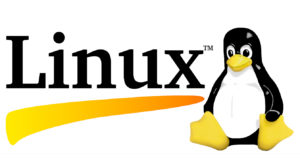 Well today I would like to give a shout out to Linux. Linux has been around since 1991. It is based on the Unix architecture and kernel. Now we can revisit that bit of information in another post down the line if need, but Mac OS X, Android, Chrome OS, and Orbis OS used on the PS4 are also “Unix like” operating systems. I guess what I would really like to stress is that Linux is not some new fad with an unproven design structure. Considering how long Linux has been around, the free availability, and the continuous upgrades to it’s various distributions through collaborative efforts, this open source software is still only used by a very small percentage of people for their personal computers and devices. There is just a large part of the population that simply over looks Linux because it is generally not the default operating system on a newly purchased computer.
Well today I would like to give a shout out to Linux. Linux has been around since 1991. It is based on the Unix architecture and kernel. Now we can revisit that bit of information in another post down the line if need, but Mac OS X, Android, Chrome OS, and Orbis OS used on the PS4 are also “Unix like” operating systems. I guess what I would really like to stress is that Linux is not some new fad with an unproven design structure. Considering how long Linux has been around, the free availability, and the continuous upgrades to it’s various distributions through collaborative efforts, this open source software is still only used by a very small percentage of people for their personal computers and devices. There is just a large part of the population that simply over looks Linux because it is generally not the default operating system on a newly purchased computer.
Linux Distributions
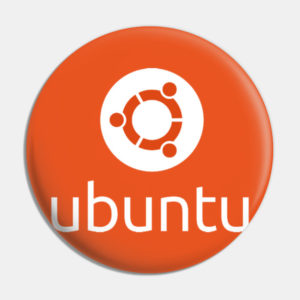 There are many distributions of Linux. Ubuntu may be one the more popular ones out there, but there are many others. Ubuntu generally ranks in the top 5 of Linux distributions. I am choosing to highlight Ubuntu for beginners because it is very user-friendly, installs easily and has a simple desktop.
There are many distributions of Linux. Ubuntu may be one the more popular ones out there, but there are many others. Ubuntu generally ranks in the top 5 of Linux distributions. I am choosing to highlight Ubuntu for beginners because it is very user-friendly, installs easily and has a simple desktop. 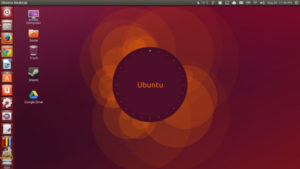
I will provide a link below that shows other distributions along with their current popularity. The main reason that I wanted to bring up open source, Linux, and Ubuntu is so that I can talk about the FREE software that you can use for school, business, and/or personal projects. This is all thanks to the open source community. Someone out there could be reading this post on a refurbished laptop that they may have purchased at a GoodWill, dreading the moment they have to purchase Windows with Microsoft Office to complete coursework for one of their classes. Well thanks to the open source community, anyone can install a distribution like Ubuntu and have access to LibreOffice for FREE.
 LibreOffice allows you to setup email, spreadsheets, text documents, and enjoy a variety of features that would be beneficial to any student or entrepreneur.
LibreOffice allows you to setup email, spreadsheets, text documents, and enjoy a variety of features that would be beneficial to any student or entrepreneur.
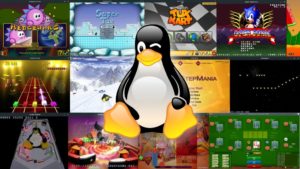 You can also customize your device with personal features and install games and other fun stuff. If a person later decides that they still want to purchase and install Windows on their device then they still have the option to do that. At any moment they can change their operating system, or set up a Virtualbox, or dual boot their computer, or just use wine open source software to run Windows applications. The point is that there are options.
You can also customize your device with personal features and install games and other fun stuff. If a person later decides that they still want to purchase and install Windows on their device then they still have the option to do that. At any moment they can change their operating system, or set up a Virtualbox, or dual boot their computer, or just use wine open source software to run Windows applications. The point is that there are options.
No operating system can guarantee 100% safety against viruses and malware. Although, it’s probably worth mentioning that Linux is considered more secure and resistant to viruses and malware when compared to Windows. That is largely due to the very strict privilege basis for root users. Because of this, it is hard for viruses and malware to gain access to root files in the operating system. I felt that I had to mention that as a nod to all the current Linux lovers out there who may be reading this. So, if someone did happen to pick up a refurbished computer at the GoodWill and they’re looking at purchasing Windows with Microsoft Office and Norton Antivirus, and it’s starting to look a little expensive for their taste, then they may want to explore options with Linux.
I do not mean for this post to be a rant and give the impression that one operating system is somehow better than another. I just want people to know that there are open source options available. If this is a new concept for you and you choose to look into it further, then I hope that you pick the best operating system for you by doing the research on your own and testing it out for yourself.
The link below will provide a list of Linux distributions according to popularity.
Below are a few websites that cater to open source projects and/or initiatives. It is just a little something extra to check out if you’ve enjoyed this topic.
Open source Hardware Association
If you would like to subscribe to the STEMVoodoo.com mailing list, please enter your first name and email below.
[mailpoet_form id=”2″]